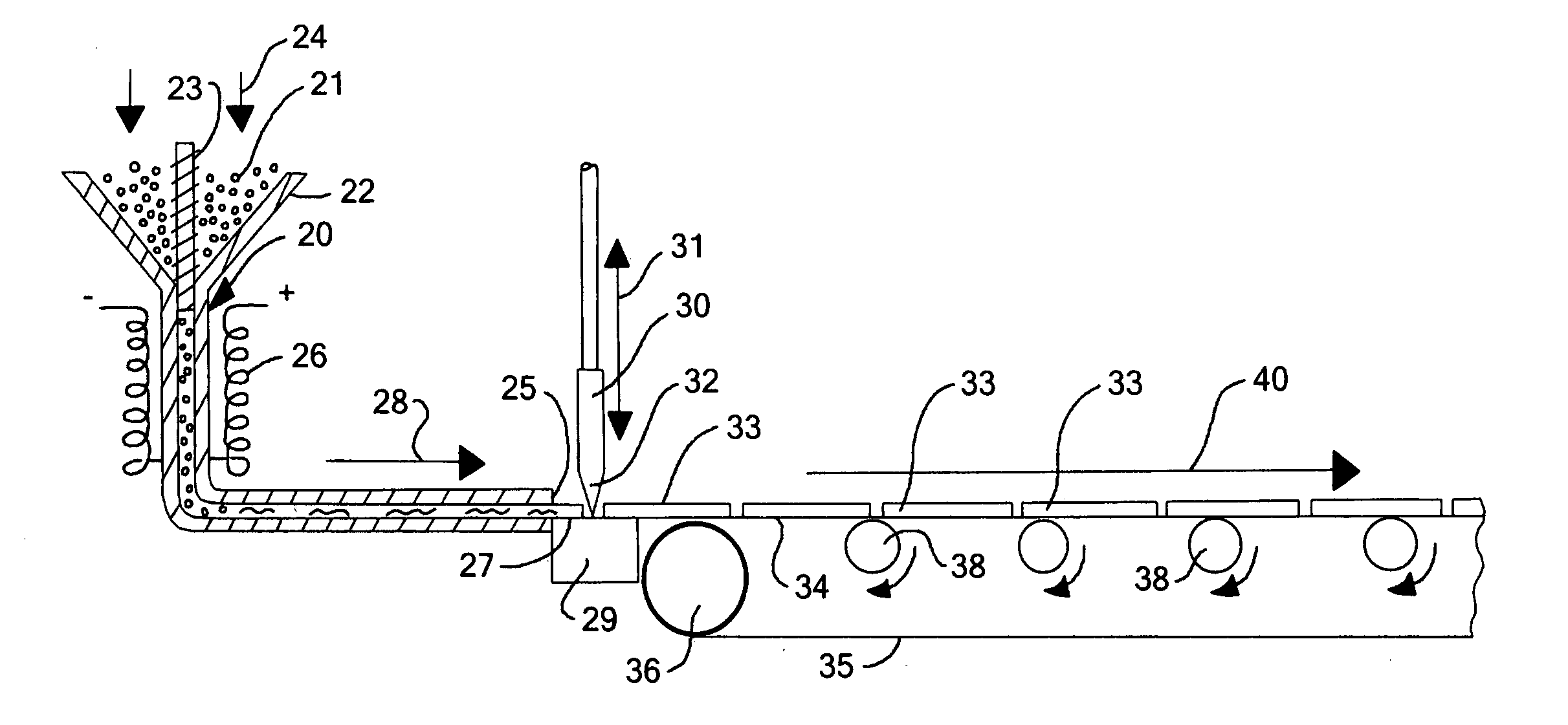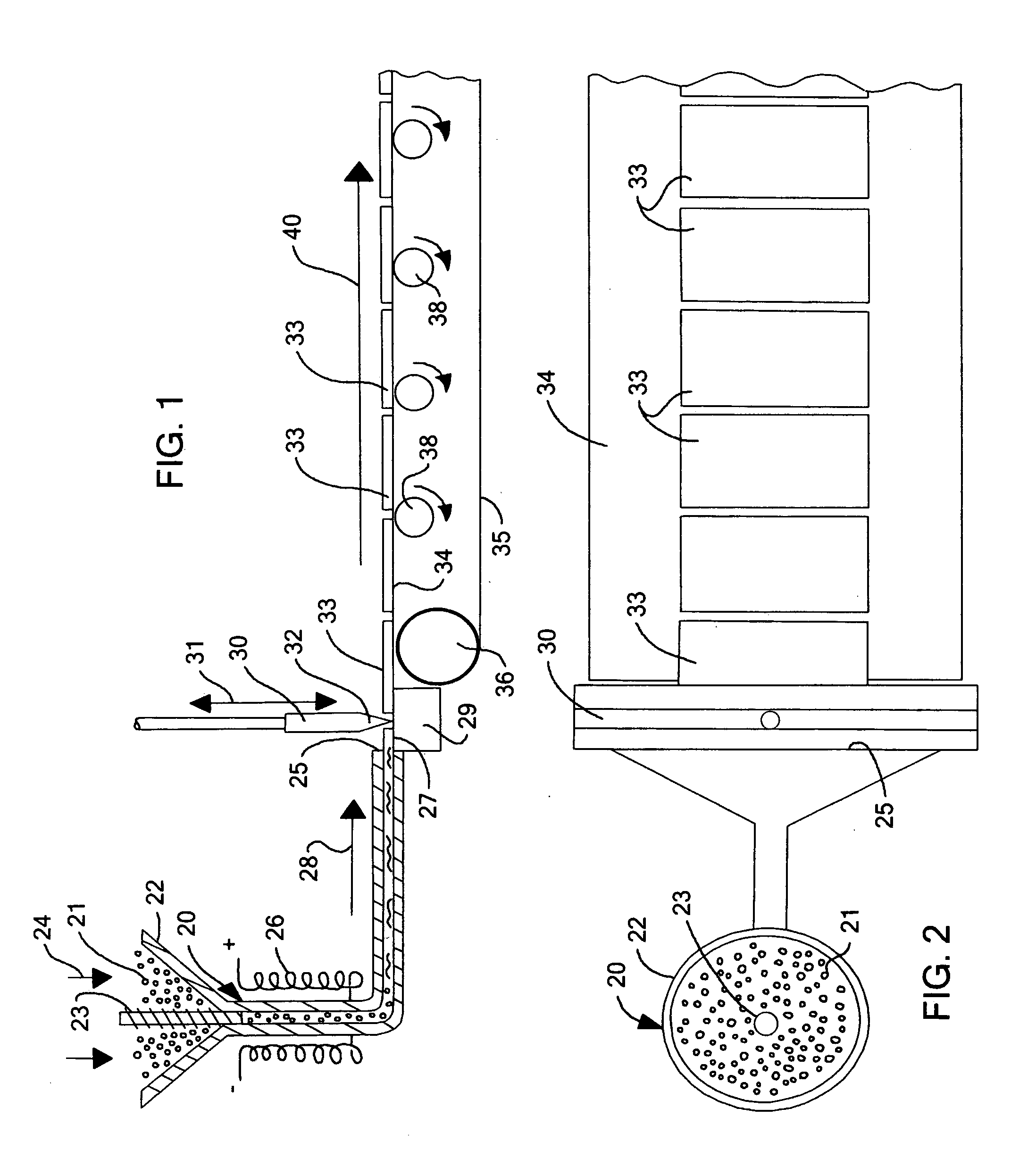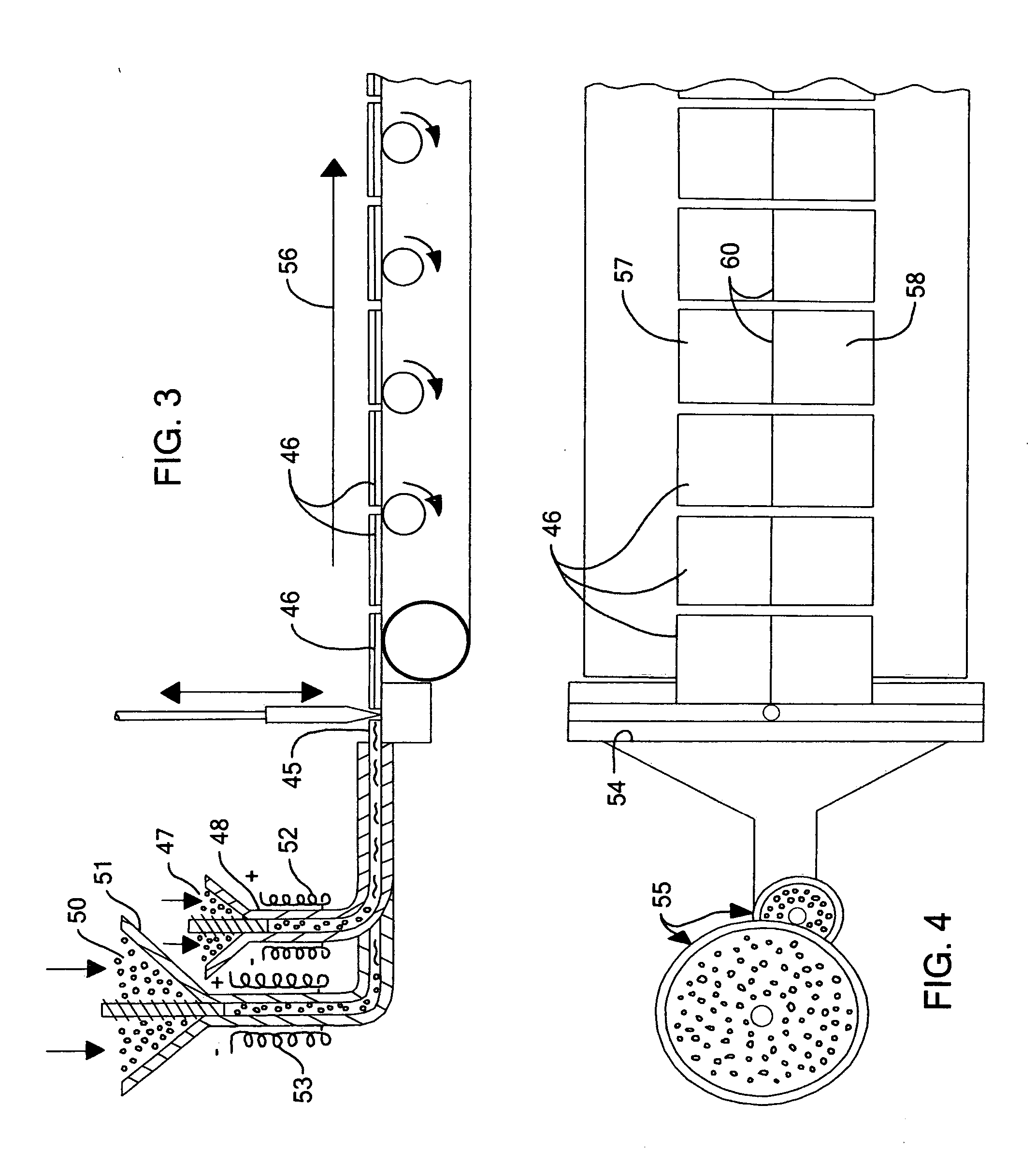Process of and apparatus for making a shingle, and shingle made thereby
a technology of shingle and apparatus, which is applied in the field of making roofing shingles and tiles, can solve the problems of reduced mechanical properties of the ultimate product, difficult processing of formulations into shingles and tiles, and color variations that are possible, so as to reduce the time required for molding operation
- Summary
- Abstract
- Description
- Claims
- Application Information
AI Technical Summary
Benefits of technology
Problems solved by technology
Method used
Image
Examples
example 1
[0088] Pellets of a flexibilized polypropylene copolymer, 18S2A, available from Huntsman Chemical, Salt Lake City, Utah, were combined in a Werner Pfleiderer twin screw extruder with calcium carbonate, Hubercarb Q3, available from J. M. Huber Corporation, Atlanta, Ga., and a stabilizer package, FS-811, available from Ciba Specialty Chemicals, Tarrytown, N.Y., using gravimetric feeders to obtain a mixture that was 49.25 wt % polypropylene, 50 wt % calcium carbonate and 0.75% stabilizer package. This mixture was extruded as a strand and chopped into pellets of filled polypropylene for later processing.
example 2
[0089] Pellets of Example 1 were dried and fed into a single screw extruder, MPM 3.5 inch in diameter, 24:1 L / D, equipped with a flex lip die and extruded to form a sheet. The die was adjusted to produce an extrudate that was about 19 inches in width and having a profile with varying thickness across the sheet ranging from about 0.375 inches to 0.245 inches. The sheet was extruded onto a first conveyor belt having variable speed matched to the extrudate speed. The temperature of the sheet was about 380 F when exiting the die.
[0090] When a section of sheet 13 inches in length had been extruded, the sheet was cut from the die lip. While still hot, the section of 19″×13″ sheet was carried to a second conveyor belt and transferred to and centered on the lower plate of a mold having a size of 18″×12″. Infrared lamps were provided above the conveyor to maintain the temperature of the sheet during transfer. On reaching the lower mold plate, the surface temperature was about 300 F. The upp...
example 3
[0092] Pellets of a flexibilized polypropylene copolymer, 18S2A, available from Huntsman Chemical, Salt Lake City, Utah, were combined in a Werner Pfleiderer twin screw extruder with calcium carbonate, Hubercarb Q3, available from J. M. Huber Corporation, Atlanta, Ga., using gravimetric feeders to obtain a mixture that was 50 wt % polypropylene and 50 wt % calcium carbonate. This mixture was extruded as a strand and chopped into pellets of filled polypropylene for later processing.
PUM
| Property | Measurement | Unit |
|---|---|---|
| Temperature | aaaaa | aaaaa |
| Thickness | aaaaa | aaaaa |
| Force | aaaaa | aaaaa |
Abstract
Description
Claims
Application Information
 Login to View More
Login to View More - R&D
- Intellectual Property
- Life Sciences
- Materials
- Tech Scout
- Unparalleled Data Quality
- Higher Quality Content
- 60% Fewer Hallucinations
Browse by: Latest US Patents, China's latest patents, Technical Efficacy Thesaurus, Application Domain, Technology Topic, Popular Technical Reports.
© 2025 PatSnap. All rights reserved.Legal|Privacy policy|Modern Slavery Act Transparency Statement|Sitemap|About US| Contact US: help@patsnap.com



